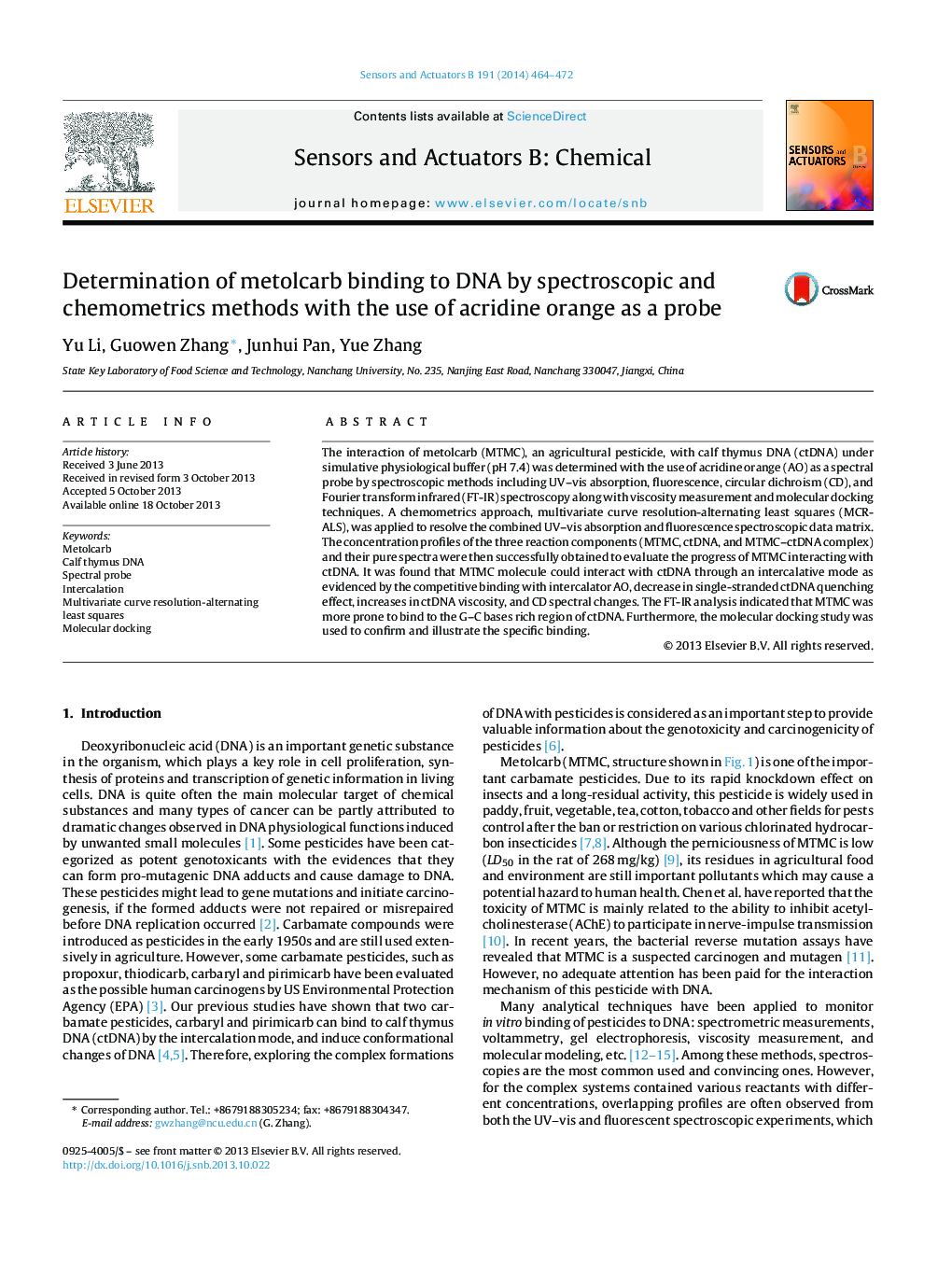| Article ID | Journal | Published Year | Pages | File Type |
|---|---|---|---|---|
| 7147691 | Sensors and Actuators B: Chemical | 2014 | 9 Pages |
Abstract
The interaction of metolcarb (MTMC), an agricultural pesticide, with calf thymus DNA (ctDNA) under simulative physiological buffer (pH 7.4) was determined with the use of acridine orange (AO) as a spectral probe by spectroscopic methods including UV-vis absorption, fluorescence, circular dichroism (CD), and Fourier transform infrared (FT-IR) spectroscopy along with viscosity measurement and molecular docking techniques. A chemometrics approach, multivariate curve resolution-alternating least squares (MCR-ALS), was applied to resolve the combined UV-vis absorption and fluorescence spectroscopic data matrix. The concentration profiles of the three reaction components (MTMC, ctDNA, and MTMC-ctDNA complex) and their pure spectra were then successfully obtained to evaluate the progress of MTMC interacting with ctDNA. It was found that MTMC molecule could interact with ctDNA through an intercalative mode as evidenced by the competitive binding with intercalator AO, decrease in single-stranded ctDNA quenching effect, increases in ctDNA viscosity, and CD spectral changes. The FT-IR analysis indicated that MTMC was more prone to bind to the G-C bases rich region of ctDNA. Furthermore, the molecular docking study was used to confirm and illustrate the specific binding.
Keywords
Related Topics
Physical Sciences and Engineering
Chemistry
Analytical Chemistry
Authors
Yu Li, Guowen Zhang, Junhui Pan, Yue Zhang,
